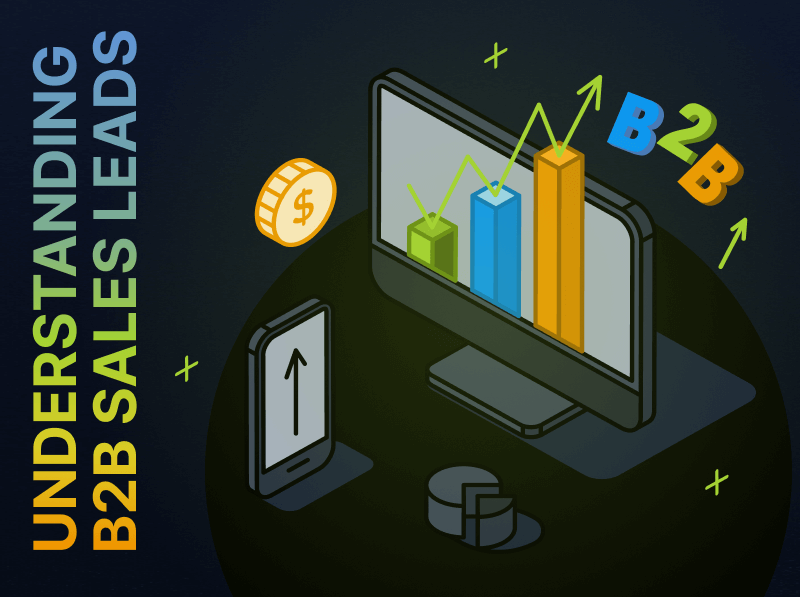B2BSMX Reflections: Marketing’s New Role in the Revenue Engine
“2020 was the ultimate A/B test,” said Gartner analyst Craig Rosenberg in a keynote at the recent B2B Sales & Marketing Exchange (B2BSMX). It was a year where we, as marketers, had no choice but to test new ideas and figure out how to better connect with buyers as we collectively addressed new challenges and answered change in demand.
As the first in-person event for most B2B marketers, B2BSMX showcased marketers’ 2020 A/B test results. The conference highlighted new trends, marketing innovations, and predictions for how marketing can not only continue to be buyer-centric but lean into their role as agents of change for their marketing teams and their organization’s revenue engine.
Organizations have adopted new channels and trends to help their services remain front and center as they create more buyer-centric experiences. Yet, there are still challenges getting in front of the buyer and remaining top of mind amongst the noise. Why is that? According to Gartner, marketers’ efforts may be on-trend, but we’ve overwhelmed the buyer with the number of tactics and assets we’re managing. “The reality is – you [the marketer] got it. You’re across all these channels but can we just do it to the same people, with the same message?” said Rosenberg at B2BSMX.
How can marketers and their revenue engine counterparts do better and innovate faster? The secret is not only in a buyer-centric mindset, but in a reframed go-to-market (GTM) strategy. Marketers are at the center of this change and are pivotal to its success. Below are tips from this year’s B2BSMX to help you get started:
Collaborate to Build Your Reframed GTM Strategy
Marketers are beginning to address what it means to truly be buyer-centric, yet new strategies and tactics are siloed by revenue function. Future successes are dependent on moving our strategy out of a functional silo and driving toward what Gartner refers to as “the revenue engine” – a collaborative cross-functional team of all revenue-facing functions including marketing, sales, customer success, and related operational functions.
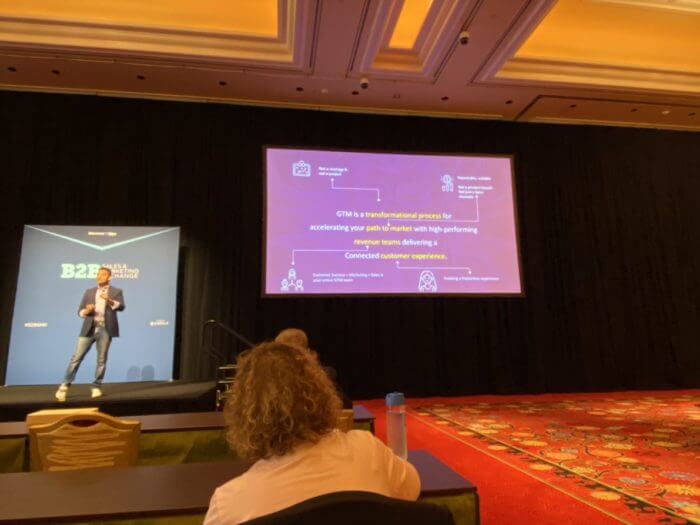
Sangram Vajre at B2BSMX, “Why Your GTM Strategy is Broken and How to Fix It”
This shift will allow organizations to accelerate their “path to market” through a collaborative vision and re-evaluated ICP. For many organizations, this starts with the revenue engine having an agreed upon ICP and related success metrics. A unified ICP definition is key to success across the revenue engine. “If you can agree on who to sell to, your ability to align and converge is 500% more likely,” continued Rosenberg in his keynote.
Marketers play a key role in this shift as we move away from narrow marketing approaches like “ABM” or “Lead Generation” and focus on a more flexible operating model centered on buying experiences. Marketers can augment the revenue engine’s ICP definition by moving away from traditional demographic and firmographic details and moving toward what Gartner calls “Engageability.”
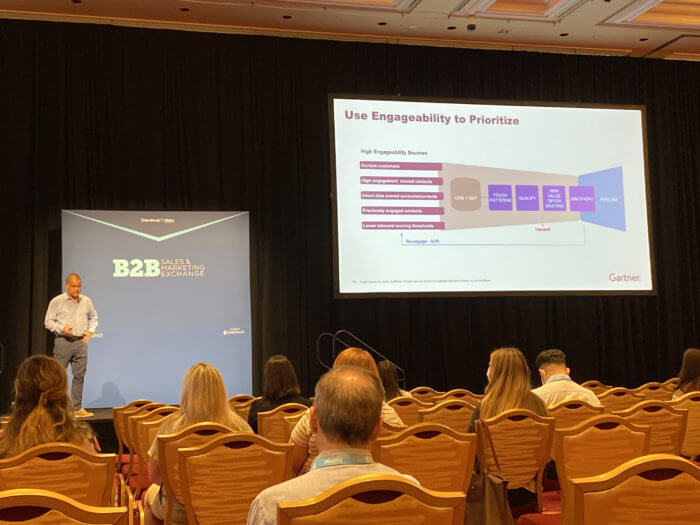
Craig Rosenberg at B2BSMX, “How 2020 Strengthened Collective Revenue Generation For High-Performing B2B Brands”
It’s no longer about the marketer’s ability to align to a static sales target account list or target individuals based on their lead score. Engageability requires insights into pieces like topical intent, likelihood to purchase organization’s solution sets, and an understanding of behavior on an account, demand unit, and person-level. As you might have guessed, building out Engageability requires similar tight collaboration across the revenue engine. And integrating Engageability gives marketers the ability to flex their strategy for a more proactive experience with buyers.
Pro Tip: Remember that the GTM pillars should span your revenue engine and your product counterparts. Operationalizing it requires a separate strategy within your function but should not silo the vision. Kelly Ford from Edison Partners reminds us, “Go-to-market should act as glue across the company. Functions should not only align to GTM but they understand how they impact/influence that strategy.”
Enable Your Team to be the CMOs of the Future
As marketers activate the reframed GTM strategy, we also have an opportunity to build the path forward for the revenue engine as traditional roles like the digital marketer and the lead generation manager evolve into revenue-focused positions with bottom of funnel goals.
Marketers closest to revenue have the biggest opportunity to not only drive change by activating buyer-centered experiences, but because of their proximity to revenue. Positioning your team to not only align with sales but build a collaborative approach to engage with buyers, enables them to understand needs across the buyer’s journey. Rosenberg notes in his presentation that marketing technology is molding into a Revenue Technology stack with shared responsibilities across the key functions.
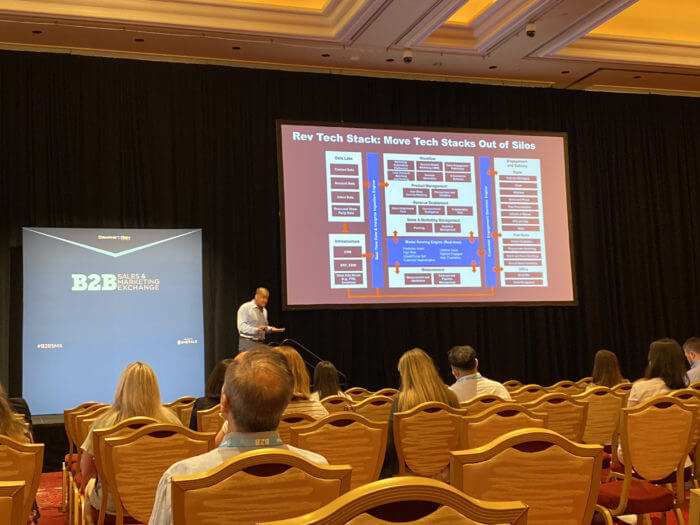
Craig Rosenberg at B2BSMX, “How 2020 Strengthened Collective Revenue Generation For High-Performing B2B Brands”
This starts with current marketing leaders not only aligning their teams with revenue goals, but giving them opportunities to expand their efforts beyond one tactic, engage across the customer lifecycle, and be familiar with the marketing tools foundational to their success. We need to remove siloed efforts and give marketers more ownership across the journey.
Pro Tip: Partner with your sales counterparts to build more collaborative career paths and objectives across your teams. Mary Shea from Outreach predicts that sales teams are on a similar trajectory, becoming “revenue innovators, a new cohort of leaders who put buyers at the center of their strategies, who arm their sellers with the most innovative sales technologies, and who over-index on data, rather than intuition to inform their business decisions.”
Encourage Optimization through the Ultimate Convergence
Preparing for the future requires more than a great activation strategy. As organizations analyze their optimization plans across people, process, and technology, they should account for what Forrester analyst, Steve Casey predicts will be the convergence of ABM & demand. Similar to the benefits of Engageability, Casey states, “The convergence isn’t a data play or a tech play – the benefit is better insights into who you’re engaging with to create better experiences.”
With this impending convergence, there are key optimization points marketers can evaluate across their processes, including:
- Orchestration: Marketing’s efforts across the targeting spectrum (accounts, demand unit, and person) can no longer be siloed. Targets move between account-based and demand strategies based on determined business logic, resulting in fewer marketing misfires and higher ROI.
- Content: Marketing’s key assets should move to more of a modular approach, so that you can mix and match your content in a real-time fashion to actively engage with your buyers.
- Measurement: Marketing’s metrics and success should be determined based on cross-functional objectives, not per marketing target or tactic. Utilize multiple lenses across your metrics to understand the blended impact of ABM and Demand.
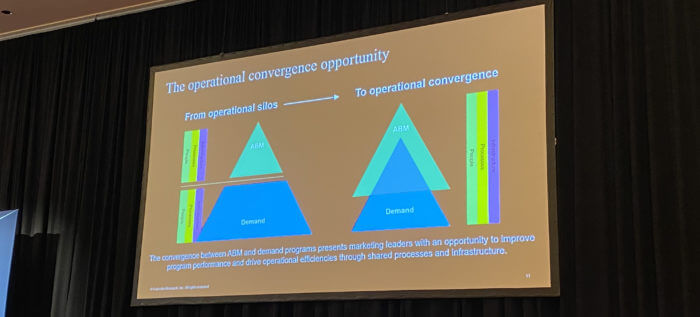
Steve Casey’s B2BSMX presentation, “Single Lane Ahead: The Convergence of ABM & Demand”
These kinds of shifts give marketers the ability to develop a more agile Precision Demand Marketing strategy, one that moves toward a collaborative center of excellence instead of responsibilities siloed by tactical focus. These changes also give marketers more influence over business success. Marketers have an opportunity to be change agents by understanding how this convergence impacts your organization’s ability to succeed against your GTM strategy.
Pro tip: Optimizing your strategy based on change in GTM and the operational convergence should be done against the demand spectrum. Your needs should be optimized based on your business’ unique set of requirements and your go-to-market maturity. No marketing trend is built to be “one-size-fits-all”.
Embrace the Future of Marketing
B2BSMX presented recommendations and research that further elevates marketing’s role to not only engage with the buyer but drive success across the business. This starts with a collective GTM with your organization’s revenue engine.
As your marketing team prepares to operationalize the reframed GTM strategy, they also have an opportunity to think beyond buzz words and build a plan for the future:
- “Marketing-Sales Alignment” evolves into a cross-functional experience based on the buyer journey
- “Customer 360” shifts based on what data actually matters to drive the business forward.
- “Marketing Orchestration” pivots based on the marketing teams’ ability to activate the GTM strategy, instead of their ability to hit tactical volume goals.
While you seek to operationalize some of this advice for your marketing organization, remember that the future of marketing starts by thinking beyond our efforts as a single function. It’s time for us to take the learnings from our year of A/B testing and implement them toward a precise, agile and connected revenue machine.

